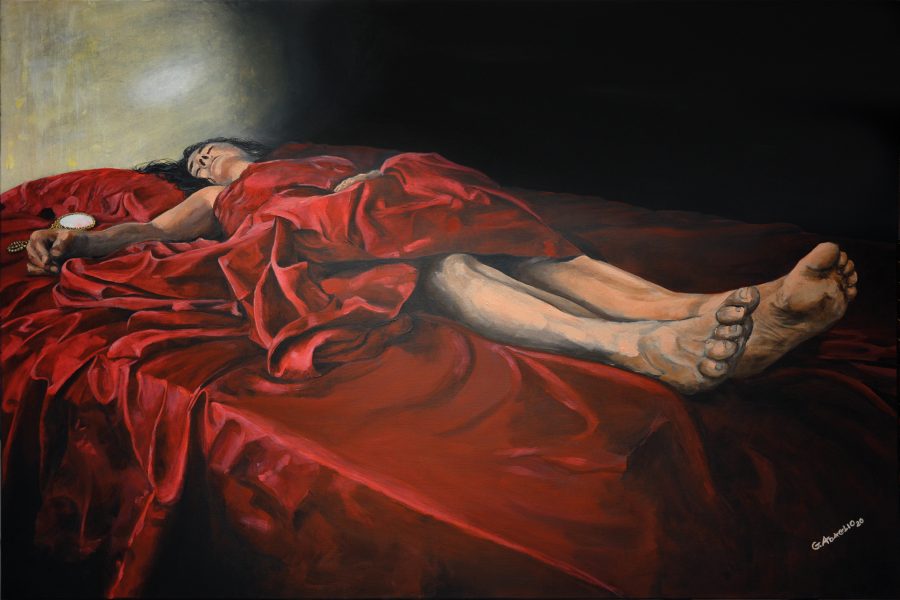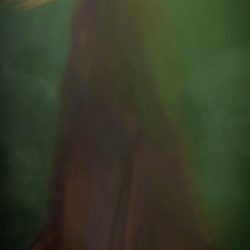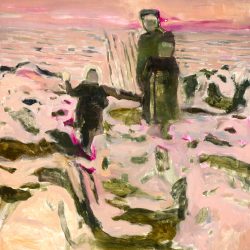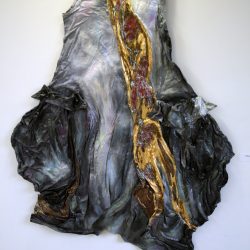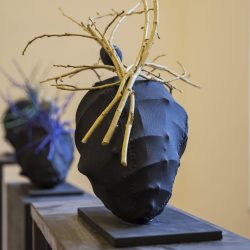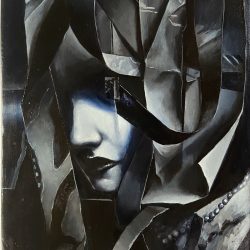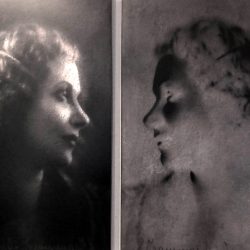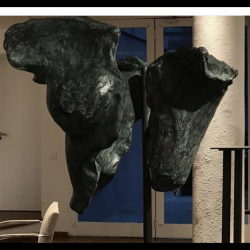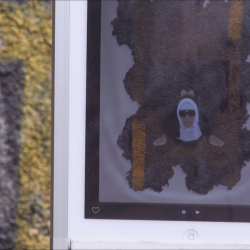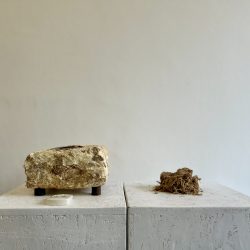work
Madre
| category | Painting |
| subject | Human figure |
| tags | vergine, caravaggio, covid |
| base | 120 cm |
| height | 80 cm |
| depth | 4 cm |
| year | 2020 |
Acrylic on canvas
Unique work
To me, creating art means to tell.
It’s like when, before knowing the alphabet, we look at the illustrations: that’s how my painting is: simple, observable even without knowing how to read. It speaks of dreams and betrayed loves, of true joys and dark sorrows, of things happened and things that could happen.
To express emotions, I use bodies as pages of a diary to share.
Mother
The recent pandemic emergency with the consequent lockdown disrupted many people's daily routines. It changed the way of working, of doing sports, hobbies, even our way of relating to one another. It closed schools, cinemas, theatres, art galleries, it kept lovers apart, it grew fears for the illness itself, for the loss of one's job, for economic problems, for the uncertainty of the future. Weaker people have been marked. It brought sorrow and death.
During this period, my mother started the final chapter of the long story of her existence. Still the same person and yet not the same one, she stepped into a fall that leaves no alternatives, the physiological consume of a lit candle.
The desire to express and elaborate those two simultaneous events made me think of "Death of the Virgin" by Caravaggio, a work of art from the beginning of 1600 which, at the time, subverted the traditional standards of this representation. My Vergin, as Michelangelo Merisi wanted it to be, is a woman, a human, a real person but unlike the famous one, surrounded and mourned by many people close to her, is alone, like people dying during COVID19, like my mother lost in one of her own thoughts, like who has been separated from their loved ones. But She is human and seems asleep. Next to Her there is a mirror, little whim and symbol of femininity, maybe used to verify the demise, maybe a last witness of a dialogue vis à vis with herself and her consciousness, symbol of double (saint/woman, woman/spouse, spouse/mother), abandoned on the sheets, identifies the figure otherwise anonymous as holy, thanks to the reflection of the sunlight creating a halo on the background wall.
Unique work
To me, creating art means to tell.
It’s like when, before knowing the alphabet, we look at the illustrations: that’s how my painting is: simple, observable even without knowing how to read. It speaks of dreams and betrayed loves, of true joys and dark sorrows, of things happened and things that could happen.
To express emotions, I use bodies as pages of a diary to share.
Mother
The recent pandemic emergency with the consequent lockdown disrupted many people's daily routines. It changed the way of working, of doing sports, hobbies, even our way of relating to one another. It closed schools, cinemas, theatres, art galleries, it kept lovers apart, it grew fears for the illness itself, for the loss of one's job, for economic problems, for the uncertainty of the future. Weaker people have been marked. It brought sorrow and death.
During this period, my mother started the final chapter of the long story of her existence. Still the same person and yet not the same one, she stepped into a fall that leaves no alternatives, the physiological consume of a lit candle.
The desire to express and elaborate those two simultaneous events made me think of "Death of the Virgin" by Caravaggio, a work of art from the beginning of 1600 which, at the time, subverted the traditional standards of this representation. My Vergin, as Michelangelo Merisi wanted it to be, is a woman, a human, a real person but unlike the famous one, surrounded and mourned by many people close to her, is alone, like people dying during COVID19, like my mother lost in one of her own thoughts, like who has been separated from their loved ones. But She is human and seems asleep. Next to Her there is a mirror, little whim and symbol of femininity, maybe used to verify the demise, maybe a last witness of a dialogue vis à vis with herself and her consciousness, symbol of double (saint/woman, woman/spouse, spouse/mother), abandoned on the sheets, identifies the figure otherwise anonymous as holy, thanks to the reflection of the sunlight creating a halo on the background wall.



